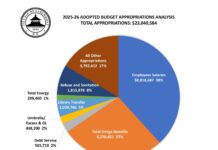
Americans find themselves at a crossroads as the 2024 U.S. presidential election approaches. This election is not just another routine exercise in democracy; it represents a crucial moment in the country’s history. The nation’s current political, economic, and social challenges make the upcoming election one of the most highly anticipated and hotly contested in recent memory. Voters are being asked to make a decision that will impact the next four years and likely influence the nation’s trajectory for decades.
The race features two prominent figures, each of whom has already held high office. On one side is the current president, who seeks re-election amidst significant national challenges. On the other side is a former president, eager to reclaim the Oval Office and continue the policies of his previous administration. However, this year’s race also brings attention to the current Vice President, who has risen as a critical contender. Her position on the ticket adds an extra layer of complexity to an already intense political landscape.
Shifting Electoral Map: The Battle for Swing States
One of the most intriguing aspects of the 2024 election is how the traditional electoral map is being reshaped. States that were once firmly aligned with one party are now more competitive, with Democrats and Republicans focusing heavily on so-called “swing states.” Key battlegrounds such as Pennsylvania, Georgia, and Arizona are expected to be decisive in determining the election outcome.
In recent years, voter demographics in these states have shifted, leading to unpredictable outcomes. For example, suburban areas, once considered Republican strongholds, have trended towards the Democratic Party in recent elections. Meanwhile, rural areas continue to remain a stronghold for Republican candidates. The shifting dynamics of these regions mean that candidates must adapt their strategies and messaging to appeal to a diverse and evolving electorate.
Winning these key swing states is crucial for the candidates. The U.S. electoral system, based on the Electoral College, means that simply winning the national popular vote is not enough. Candidates must secure the necessary number of electoral votes by winning individual states, making the path to victory more complex than it might seem at first glance.
Polling Trends and Election Forecasts
As the election draws closer, polling data is one of the most closely watched aspects of the race. Polls offer a snapshot of public opinion, providing insight into how different population segments are likely to vote. Throughout the election season, various polling organizations have released data that helps shape the race’s narrative.
One poll that has drawn particular attention is the New York Siena Poll, which shows that “Harris leads Trump 53%-39% in New York Siena Poll.” This result has surprised some political analysts, suggesting that the Vice President has a strong lead in critical areas. However, while this is an encouraging sign for the Democratic ticket, it’s essential to remember that polls are not always accurate predictors of the outcome. Numerous factors can influence voter behavior in the campaign’s final weeks, making it difficult to draw definitive conclusions from any poll.
Experts often warn that while polls are valuable tools, they should be interpreted cautiously. Many variables, including voter turnout, undecided voters, and last-minute developments, can dramatically alter the dynamics of the race. As a result, campaigns continue to work tirelessly to energize their base and reach undecided voters.
Key Issues at Stake: Economy, Healthcare, and Foreign Policy
As with any election, the issues that matter most to voters will play a critical role in shaping the outcome of the 2024 race. The economy, healthcare, and foreign policy are among the most pressing concerns. Each of these issues presents unique challenges and opportunities for the candidates.
The economy remains a central focus for many voters. Candidates must present compelling plans to address inflation concerns, rising housing costs, and an unpredictable job market. Economic performance often plays a significant role in determining the outcome of elections, and this year is no different.
Healthcare is another issue at the forefront of voters’ minds. The COVID-19 pandemic has had a lasting impact on public health and the healthcare system. Candidates are expected to offer solutions for improving healthcare access and affordability, particularly as the nation recovers from the pandemic’s economic and social fallout.
Foreign policy is also likely to play a more significant role in this election than in previous ones. With global tensions rising, particularly with countries like China and Russia, voters will seek a candidate who can demonstrate strong leadership on the world stage. Navigating trade disputes, military alliances, and diplomatic negotiations will be key priorities for the next president.
Understanding Presidential Election Odds
In any election, much attention is paid to the presidential election odds. These odds give an indication of which candidate is more likely to win based on various factors such as polling data, voter turnout projections, and historical trends. While the odds can offer some insight, they are far from definitive, as elections are dynamic events that can change rapidly in response to new developments.
One of the critical challenges facing both campaigns is ensuring high voter turnout. Higher turnout benefits certain political parties traditionally, but this election could defy expectations. With such high stakes, both candidates work tirelessly to mobilize their supporters and get them to the polls.
Voter Turnout and the Role of Independents
Voter turnout is always a critical factor in U.S. elections, but in 2024, it could be even more significant than usual. Both campaigns are putting considerable effort into increasing turnout, particularly in swing states, where even a tiny shift in voter behavior could significantly impact the final result.
One of the most crucial demographics in this election is independent voters. These voters do not align strongly with either major political party, making them an essential target for both campaigns. Independent voters have the potential to swing the election in one direction or another, particularly in states where the margins are expected to be tight.
The Vice President’s Campaign: A Rising Political Figure
The current Vice President has emerged as a formidable political force in the 2024 election. Her candidacy has garnered significant attention due to her leadership on criminal justice reform and climate change issues. With growing support, she has the potential to bring new energy to the Democratic ticket.
According to the New York Siena Poll, the Vice President currently holds a commanding lead in certain key regions. However, maintaining that momentum will be critical in the final weeks before election day.
The Former President’s Strategy: Aiming for a Comeback
On the other side of the aisle, the former president works diligently to mount a political comeback. His strategy focuses heavily on appealing to his base by promising a return to the policies of his previous administration. He continues to hold rallies nationwide, energizing his supporters and seeking to expand his appeal to independent and swing voters.
Conclusion: What Lies Ahead for America
As election day approaches, one thing is clear: the 2024 U.S. presidential election is poised to be one of the most consequential in recent history. Voters will soon decide which vision for America’s future is best. Whether the nation opts for continuity or change, the impact of this election will be felt for years to come.





